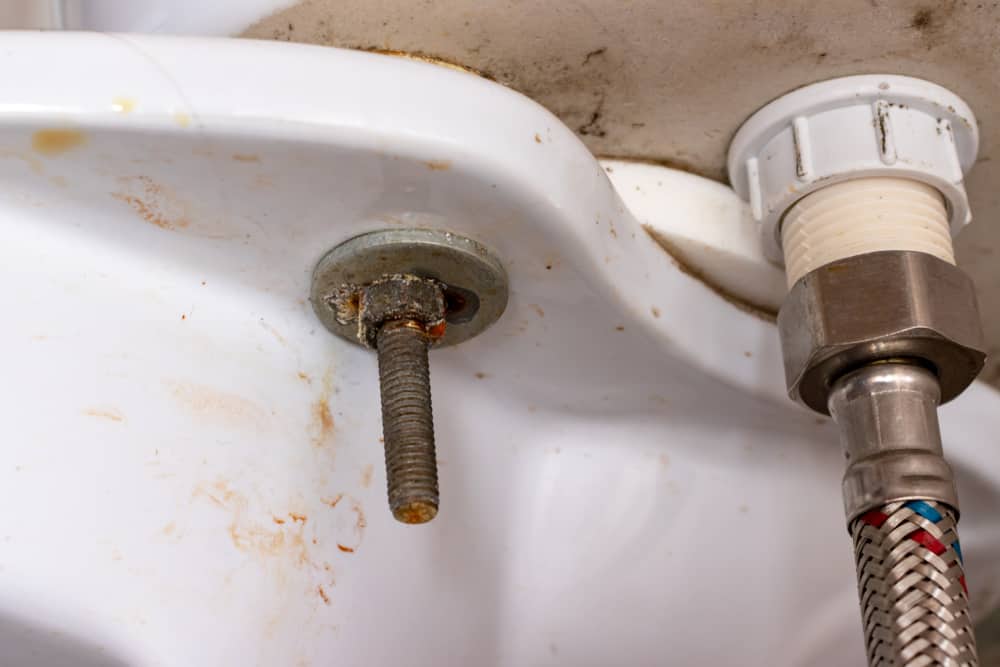How to Properly Set a Toilet to Prevent Leaks
The toilet is one of the most important pieces of equipment in your home. A leaky toilet can cause a lot of damage to your bathroom, floors, and even walls. Having a leaky toilet is not something you want to have. You can spend hundreds of dollars on water bills and repairs.
A toilet leaking can be difficult to identify because the water may come from different parts of the tank or bowl. If you are having problems with your toilet, there are some easy ways to find out where the leaks are coming from and how to stop them quickly.
When replacing the existing toilet after, ensure there’re good seals to prevent leaks. Fixing a leaky toilet isn’t hard once you know what causes it and how to fix it fast. Just follow these few simple steps.
Signs of Toilet Leaking
Here are some of the reasons why your toilet might be leaking from the base:
The Tee Bolts Need to be Tightened
The bolts that keep your toilet fastened to the floor are known as tee bolts. Older homes have low-quality tees, which may cause toilets to leak. If these bolts loosen, the toilet will rock, causing the seal formed by the wax ring to break. Overtightening the bolts can also lead to toilet leaks because the flange bolt can affect the wax ring’s ability to create a tight seal.
The Wax Ring Needs to be Replaced
The wax ring is a doughnut-shaped seal that fits around the bottom of your toilet. It protects the floor from leakage and damage caused by the constant weight and pressure of the toilet. Unfortunately, this can wear down over time and cause toilets to leak, especially around old toilets where you might not have properly set the tee bolts in place.
Loose Water Supply Line
If there’s a loose water supply line, you’ll notice the leaking at the base. Check where the supply line connects to the tank and ensure the nut and rubber are sealed tightly.
Water is Condensing on the Toilet and Dripping Down
If there’s water condensing on the outside of the toilet and dripping down, you’ll need to check if your wax ring is damaged or missing. You should also inspect for possible cracks and holes at the base and around the toilet.
Tools and Materials to Set Toilet
Adjustable wrenchScrewdriverBathroom cleanerCleaning cloths such as terry cloth and microfiber towelsToilet repair kitSilicone caulkRubber glovesHacksawUtility knife or putty knifeToilet wax ringToilet bolts
Steps to Stop Your Toilet from Leaking
Shut Off Water Supply
Start by turning off the water supply to the toilet tank. Most baths come with a small supply shutoff valve extending from the wall below the tank. If the shut-off valve is new, you can use your hand to operate it or use pliers to gently turn it off position.

Image credit: https://www.lifesavvy.com/
Flush Out Toilet Water
Flush the toilet to remove excess water before you begin the repairs. Remove the lid and place it in a safer place where it won’t be dropped or damaged. Make sure the supply valve is in an off position before flushing and emptying your tank. Make sure that no new water enters through the fill valve in the corner of the tank. If water continues entering through the fill valve, then your meter and disconnect the supply line from the bottom tank.
Unscrew and Tighten the Tee Bolts
Remove the plastic bolt caps from the flange bolts in the corners of your toilet tank. Unscrew these closet bolts with a large pair of adjustable pliers or an adjustable wrench by turning them counterclockwise. Pull up on the tank so that it rests in front of its original position, exposing the floor flange beneath it.

Image credit: https://upgradedhome.com/
There will be only one bolt on either side of the base of the toilet. Tightening your toilet against the floor will ensure the wax ring that seals the toilet drain outlet will be compressed. If the closet bolts are already tight, remove and reinstall the toilet to install a new wax ring and new bolts.
Remove the Toilet
If the closet bolts are already tight, remove and reinstall the toilet to install a new wax ring and new bolts. Learn how to remove the toilet properly before you proceed. Make sure you shut off water to your toilet before you start disconnecting. The shutoff valve is located on the left side of the toilet near the water supply tube and the water valve tailpiece.

Image credit: https://i.ytimg.com/
Grab the toilet bowl with both hands, lift and walk it around to remove it from the flange and drain pipe. Take extra care when removing a heavy toilet. They are easily dropped after disconnecting the water supply lines.
Scrape Off Previous Wax Ring
The toilet is always mounted to the flange with a round wax seal. So, scrape off all the wax residue from the flange using a paint scraper or putty knife. Also, scrape off the wax that could have remained on the bottom side of the base of the toilet.
Even though a new wax ring might show a nice, clean appearance, the old wax ring will be discolored and flattened. Get everything as clean as possible by using a rag to wipe down the underside of the toilet base and the floor flange.
Level the Toilet
A toilet is leveled by adjusting the height of the floor bolts underneath the bowl. However, this process depends on whether or not you are installing a new wax ring. Confirm if the toilet base is stable and level it from rocking it side to side and back to front.
If it doesn’t sit correctly, it will rock and leak over time. But you can correct it by using slip toilet shims between the base and the floor to stop rocking before bolting it down. The location and the number of slip toilet shims you’ll need depend on the toilet and the floor. Once your toilet stops rocking, you can bolt it down with a nut and washer on each closet bolt.
Install New Bolts into Flange
When you are installing the toilet, replace any old toilet bolts with new ones. A bolt breaks easily if it’s rusted or corroded. If you’re installing a new wax ring, coat the bolts with grease or soap to make it easy for them to slide into the flange. Remove the plastic covers from the base of your toilet before tightening the bolts.
After positioning the toilet bolts into the correct height of holes, push down on the ring to ensure it’s firm and tighten the bolts. When you feel or hear a pop, lift off and use a screwdriver to cinch up the nut that is visible from below. You don’t want it super tight, just firm enough that there won’t be any toilet leak over time.
Install New Wax Ring & Bolt
With the bolts in place and tightened, it’s time to install a new wax ring. Be sure it fully covers the flange, as old rings can slip during use and cause problems. If you don’t have enough space around the base of the toilet or there is no extra space above the surface of your finish, call a plumber.
If you decide to do it yourself, look for a helper because the toilet is very heavy. With a helper, tip the toilet back to an upright position on the cardboard sheet.
Reinstall the Toilet
You can sit or kneel on the toilet bowl rim to lift your toilet carefully and place it back over the drain to allow the tee bolts to slip through the bolt holes. Line up the back of the bowl and flange with the large rubber washer and nut. Make sure it’s sitting level and tighten all nuts and bolts once you’ve checked that.
Press your toilet down to the wax ring and rock it gently so that it settles into any space that might have been left from the previous installation. Recheck your bolts and nuts to make sure they’re all snug but not too tight.
Connect the Water Line
Reconnect the water supply tube to the fill valve and turn the water back on. Allow the tank to fill until the tank valve shuts off. Flush and repeat to ensure the flange seal is working.
Caulk Your Toilet’s Base
Put on plastic caps and caulk the surrounding base of your toilet. Caulking will not only secure your toilet to the floor but will solidify your work. It will also prevent water from other sources from entering the base of your toilet and causing complications such as mold and unpleasant smells.
Choose silicone-based, tile, or bathroom caulk, as these will prevent condensation and moisture from seeping into the caulk and causing mold. Use masking tape to block areas where you don’t want to caulk. Leave the caulk to dry for several hours before use. Use a solvent and a rag to clean up any excess caulk.
FAQs on How to Properly Set a Toilet to Prevent Leaks
How should a toilet flange sit on the floor?
The toilet flange should be on top of the floor, meaning the bottom of the edge needs to be on the same plane as the toilet.
How do you ensure your toilet doesn’t leak?
Open your valve and flush it severally to ascertain if the water is draining properly. Once you deem it does, use the plumber’s putty to create a seal between the flange and floor.
Final Thought on How to Properly Set a Toilet to Prevent Leaks
As you can see, toilet leaks can cause several problems; therefore, fixing them immediately will save you money on your water in the long run. To prevent these problems, you need to know how to properly set a toilet on the floor to prevent these leaks and enjoy peace of mind.
The post How to Properly Set a Toilet to Prevent Leaks appeared first on Kitchen Infinity.
Did you miss our previous article…
https://public-kitchen.org/?p=238


